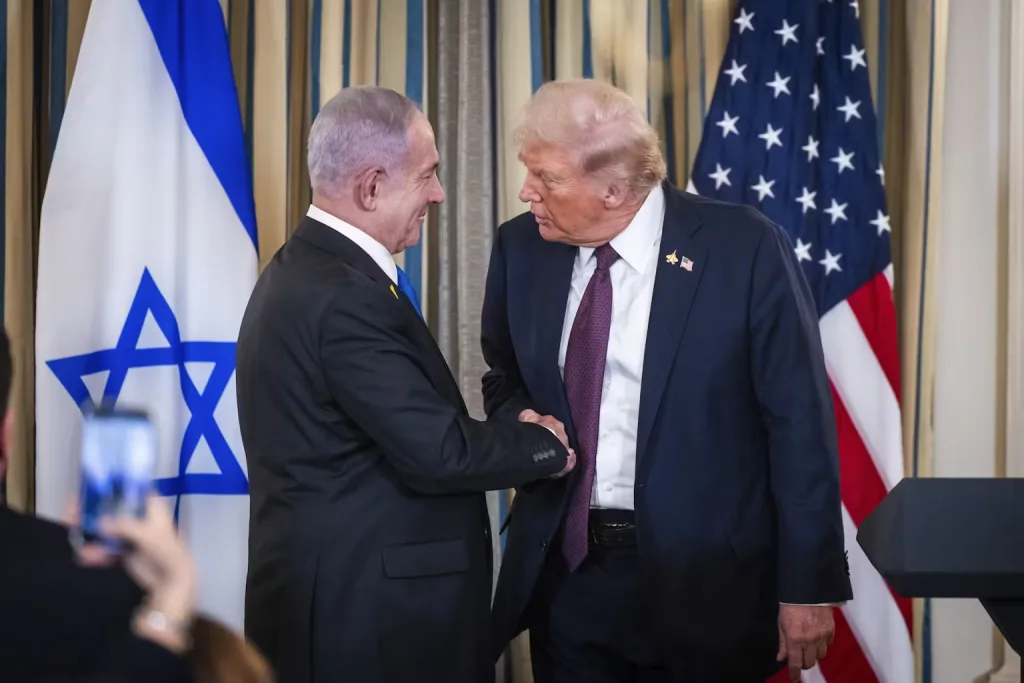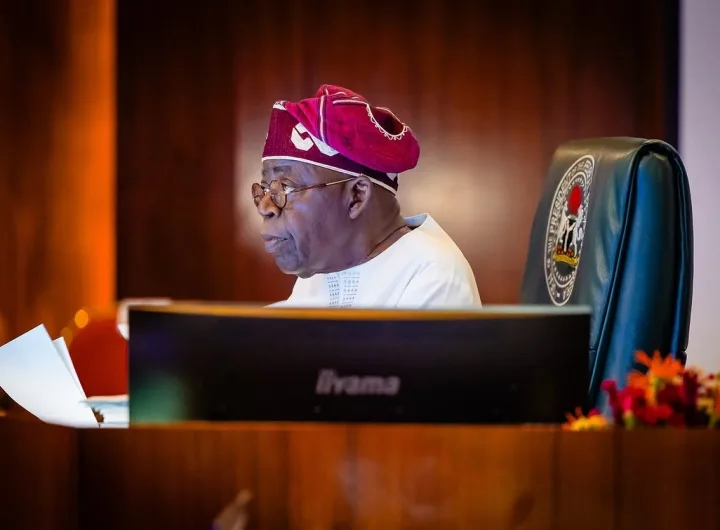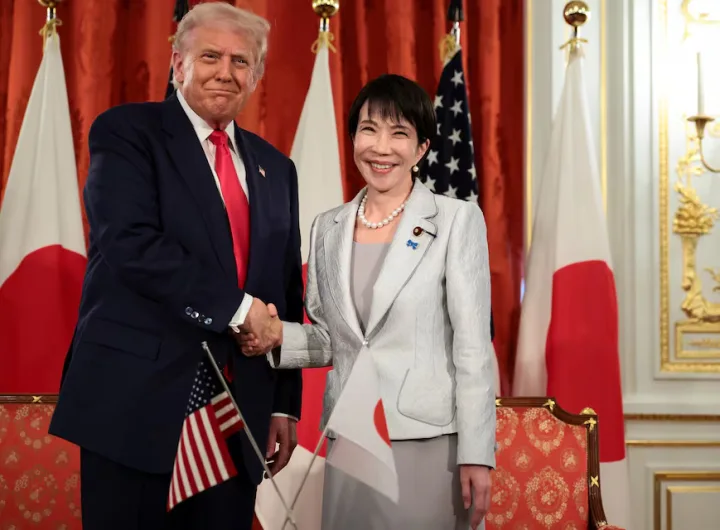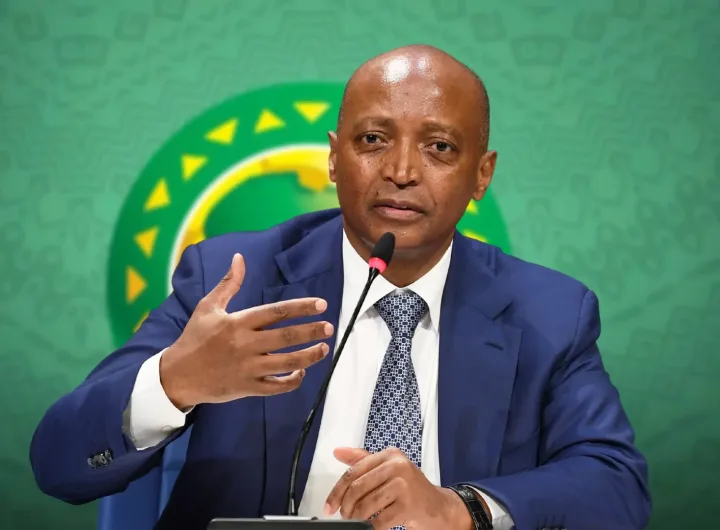
Trump and Netanyahu exchange pleasantries Gaza talks/EPA
As diplomatic efforts intensify, the Trump administration signals renewed commitment to brokering a resolution to the Israel-Hamas conflict.
WASHINGTON — After more than a year of devastating conflict that has claimed tens of thousands of lives and displaced millions, there are growing signs that a pathway to peace between Israel and Hamas may be emerging under President Donald Trump’s renewed Middle East peace initiative.
A New Diplomatic Push
Since returning to office in January 2025, President Trump has made resolving the Israel-Hamas conflict a top foreign policy priority. Building on relationships established during his first term, the administration has assembled a team of negotiators working behind the scenes with regional partners including Egypt, Qatar, and Saudi Arabia to craft a comprehensive peace framework.
“We’re closer than we’ve been in a long time,” a senior White House official said on condition of anonymity.
“Both sides understand that the current situation is unsustainable, and there’s a genuine willingness to explore solutions that seemed impossible just months ago.”
Key Elements of the Proposal
While full details remain closely guarded, sources familiar with the negotiations indicate the Trump peace plan includes several critical components:
- Phased ceasefire implementation with international monitoring.
- Humanitarian corridors to facilitate aid delivery to Gaza.
- Prisoner and hostage exchanges addressing one of the most sensitive issues for both sides.
- Reconstruction commitments with Gulf state funding for Gaza’s devastated infrastructure.
- Security guarantees aimed at addressing Israel’s concerns while providing autonomy for Palestinian governance.
Regional Support Building
The involvement of Arab nations, particularly those that normalized relations with Israel under the Abraham Accords, has proven crucial. Saudi Arabia and the United Arab Emirates have both indicated willingness to provide financial support for reconstruction efforts if a sustainable peace agreement can be reached.
Related: Israeli Prime Minister Benjamin Netanyahu Vows To Intensify Attacks On Gaza
“The regional dynamics have shifted significantly,” noted Dr. Sarah Mitchell, a Middle East analyst at the Atlantic Council.
“Countries that once stayed on the sidelines now have diplomatic relationships and economic interests that incentivize them to be part of the solution.”
Significant Obstacles Remain
Despite the optimistic signals, formidable challenges persist. Trust between the parties remains virtually nonexistent after months of intense fighting. Hamas’s political leadership faces internal pressure from hardline factions, while Israeli Prime Minister Benjamin Netanyahu must navigate a complex domestic political landscape where coalition partners hold divergent views on any potential agreement.
R
Set featured image
The status of Gaza’s governance post-conflict remains particularly contentious, with disagreements over who would control security, manage reconstruction funds, and represent Palestinian interests in future negotiations.
Cautious Optimism
International observers are maintaining measured expectations while acknowledging the unprecedented level of engagement. United Nations officials have praised the diplomatic efforts while emphasizing that any agreement must address the underlying grievances that have fueled decades of conflict.
“We’ve seen false dawns before,” cautioned James Reynolds, former U.S. ambassador to the region.
“But the combination of exhaustion from conflict, regional diplomatic pressure, and sustained American engagement creates conditions that haven’t existed before. If there was ever a moment for breakthrough, this might be it.”
The Human Cost
The urgency of achieving peace cannot be overstated. The conflict has resulted in catastrophic humanitarian conditions in Gaza, with widespread destruction of homes, hospitals, and critical infrastructure.
Thousands of Israeli families continue to mourn loved ones lost in the October 2023 attacks and subsequent fighting, while the fate of remaining hostages weighs heavily on the nation’s conscience.
As negotiations continue in various regional capitals, the world watches to see whether this latest peace initiative can succeed where so many previous efforts have failed.
For millions caught in the crossfire, the promise of peace cannot come soon enough.

 Nigeria This Week: A Tale Of Misfortunes
Nigeria This Week: A Tale Of Misfortunes  Is Nnamdi Kanu Guilty Of Terrorism?
Is Nnamdi Kanu Guilty Of Terrorism?  BBC Apologizes To Donald Trump Following President’s $1 Billion Lawsuit Threat
BBC Apologizes To Donald Trump Following President’s $1 Billion Lawsuit Threat  Malian TikTok Content Creator Killed By Jihadists Following Pro-Military Posts
Malian TikTok Content Creator Killed By Jihadists Following Pro-Military Posts  Trump Redesignates Nigeria as ‘Country of Particular Concern’ Over Religious Freedom Claims
Trump Redesignates Nigeria as ‘Country of Particular Concern’ Over Religious Freedom Claims  Trump Praises Japan’s First Female Prime Minister Sanae Takaichi
Trump Praises Japan’s First Female Prime Minister Sanae Takaichi  Why Very Dark Man And Mr. Jollof Fought On A Plane
Why Very Dark Man And Mr. Jollof Fought On A Plane  CAF Announces Free E-visa For Fans At The 2025 AFCON In Morocco
CAF Announces Free E-visa For Fans At The 2025 AFCON In Morocco